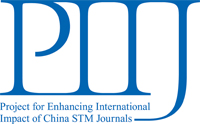Objective
This study investigated the aphrodisiac activity of aqueous extract of Anthonotha macrophylla leaves (AEAML) in female Wistar rats.
Methods
Thirty female rats were assigned into five groups of six animals each, such that rats in groups A, B, C, D and E received orally 1 mL of distilled water only, 5.7 mg/kg body weight (BW) of Exus Ginseng (a polyherbal formulation), 25, 50 and 100 mg/kg BW of AEAML, respectively. After 1 h of treatment, female sexual behaviour parameters were monitored for 30 min. Luteinizing hormone (LH), follicle stimulating hormone (FSH), estradiol (E) and testosterone were also determined using standard methods.
Results
Six secondary metabolites were detected in AEAML with alkaloids (13.00 mg/L) being the highest. AEAML at 25 and 50 mg/kg BW significantly (P<0.05) increased the darting frequency, hopping frequency, lordosis frequency, anogenital grooming, genital grooming and licking behaviour, whereas the darting latency, hopping latency and lordosis latency decreased (P<0.05) in a manner comparable with Exus Ginseng. The 25 and 50 mg/kg BW of AEAML increased (P<0.05) the serum concentrations of FSH, LH and E, like Exus Ginseng, whereas testosterone content was not altered (P>0.05). The 100 mg/kg BW of AEAML did not alter (P>0.05) the sexual behaviour parameters, serum FSH, LH and E contents, whereas testosterone content increased significantly. The ovarian histology of the animals treated with Exus Ginseng, AEAML at 25 and 50 mg/kg BW revealed developing and ruptured follicles with numerous corpora lutea in the stroma, whereas the 100 mg/kg BW of AEAML produced fewer follicles and corpora lutea.
Conclusion
The enhanced proceptive, receptive and orientation components of the female sexual behaviour by the 25 and 50 mg/kg BW of AEAML confers sexual invigorating potential on the plant. This study thus justifies the folkloric claim of the plant as a female aphrodisiac.
 Table of Content
Table of Content














